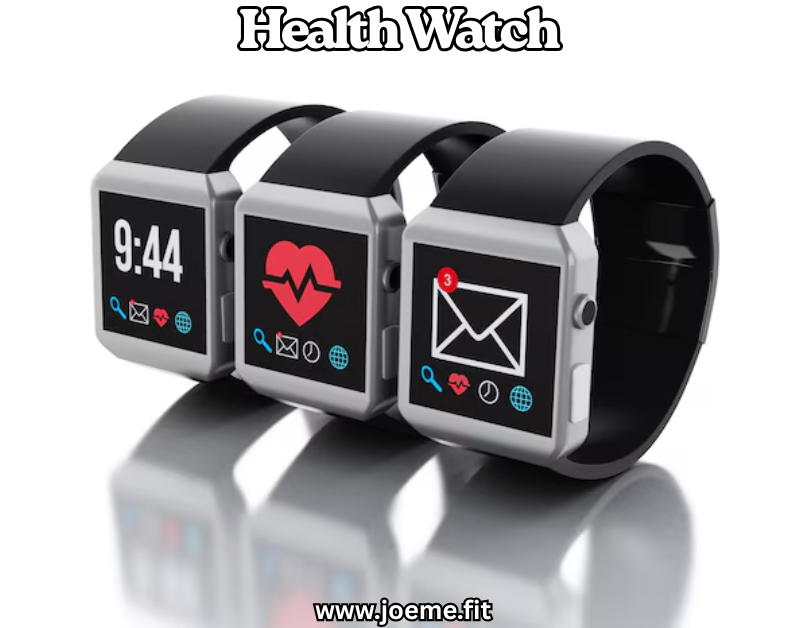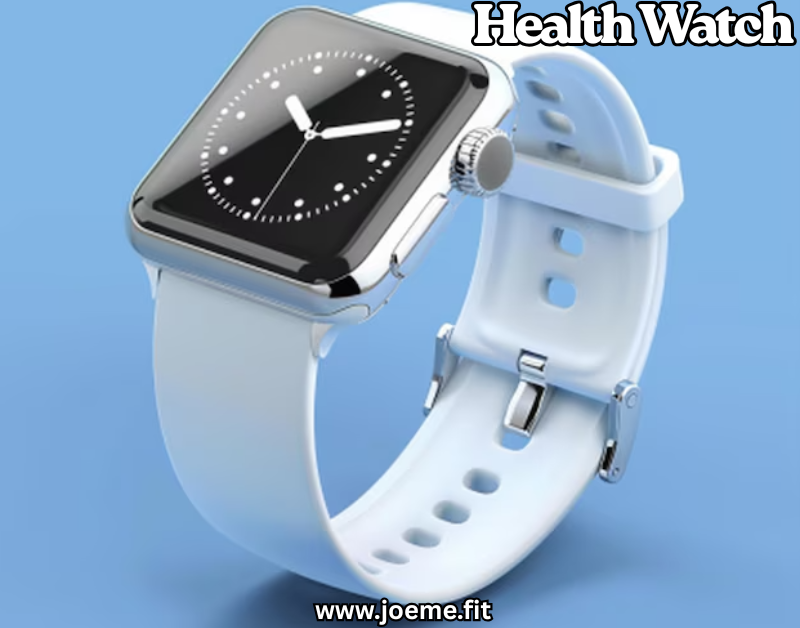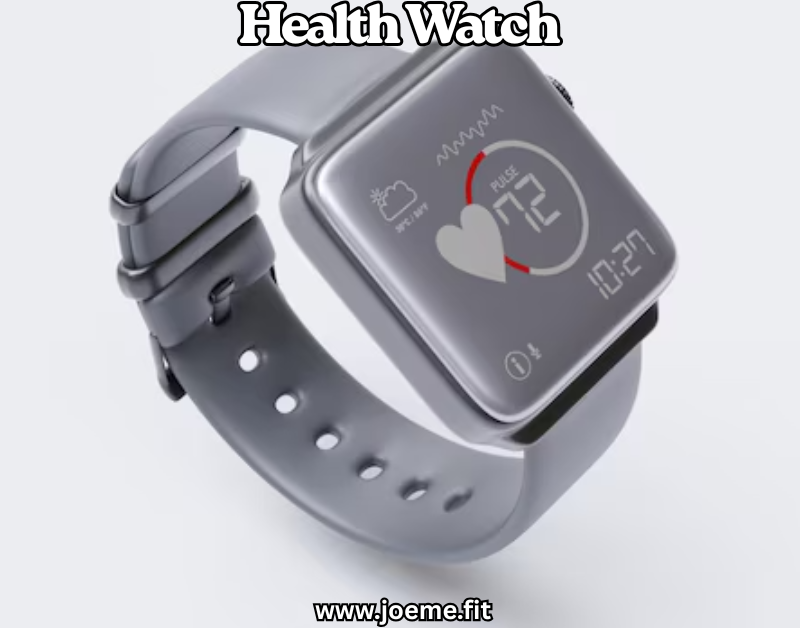A health watch is no longer a simple gadget—it has become a personal companion that tracks your daily routines, workouts, and even how well you recover at night. The global market for these devices continues to grow because people now demand more than just step counts. They want accurate insights into heart health, sleep quality, and energy balance. This means buying the right device requires careful thought rather than just following trends.
With so many options available, it’s easy to feel overwhelmed. Some watches come loaded with flashy extras that look impressive but rarely add long-term value. Others focus on the essentials but deliver them with accuracy and consistency. The real challenge is figuring out which features you actually need and which ones are just noise.
A practical approach is to focus on features that will genuinely improve your lifestyle. If the watch is accurate, easy to use, and built to last, it becomes part of your routine without extra effort.
Health watch features you must check before buying
In this guide we will explain the must-check features before buying a health watch, giving you a clear roadmap to make the right choice.

Understanding Why Features Matter
When shopping for a health watch, every brand will highlight dozens of features. But not all of them hold equal weight. Some features are core essentials—like heart rate monitoring and sleep tracking—while others are add-ons that you might never use. Visit here!
- Focus on features that align with your lifestyle.
- Prioritize accuracy and ease of use over gimmicks.
- Consider long-term value: how features integrate into your daily routine.
The right combination of features ensures consistent use and makes your investment worthwhile.
Heart Rate Monitoring Accuracy
Heart rate tracking is the backbone of a reliable health watch. It directly affects your workout quality and everyday awareness of your body’s signals.
- Why it matters: Knowing your heart rate helps you maintain safe training zones, manage stress, and track long-term cardiovascular trends.
- Key checks:
- Optical sensors that perform well during rest and activity.
- Consistency across different types of movement (running, cycling, walking).
- Adjustable strap fit to ensure good skin contact.
- Pro tip: Devices that pair with external chest straps often deliver the highest accuracy.
A watch that can’t measure heart rate accurately loses credibility in every other feature it provides.
Blood Oxygen Monitoring (SpO2)
Blood oxygen data adds another layer of insight. It shows how efficiently your body distributes oxygen, which ties to sleep, performance, and overall health.
- Why it matters: Monitoring SpO2 can highlight issues like sleep disruptions or poor recovery from exercise.
- Key checks:
- Real-time readings plus overnight monitoring.
- Consistency in measurement, even if exact medical-grade precision isn’t possible.
- Clear graphs or trends over time, not just one-off numbers.
- Pro tip: Use SpO2 readings to track patterns rather than focusing on single measurements.
A dependable health watch should turn raw data into actionable trends you can easily understand.
Sleep Tracking That Works
Rest is as important as activity. A good health watch should give you a realistic view of your sleep cycles.
- Why it matters: Quality sleep impacts mood, focus, and recovery. Poor sleep undermines health goals.
- Key checks:
- Automatic sleep detection without manual setup.
- Breakdown of light, deep, and REM sleep stages.
- Integration with recovery metrics for a complete picture.
- Pro tip: Look for devices that connect sleep data with daily readiness scores.
Effective sleep tracking isn’t about perfect accuracy—it’s about recognizing patterns that help you adjust habits.
Battery Life and Charging Speed
Battery life can determine whether you keep using your device or abandon it in a drawer.
- Why it matters: Frequent charging interrupts tracking and makes users inconsistent.
- Key checks:
- Minimum of 5–7 days of continuous use on a single charge.
- Fast charging for quick top-ups during busy schedules.
- Battery optimization when GPS and advanced sensors are active.
- Pro tip: Watches offering 50% charge in 30 minutes make daily use much easier.
The less you worry about charging, the more seamlessly the watch fits into your lifestyle.
Waterproof and Durability Standards
Since your device is worn daily, it must handle different environments without breaking down.
- Why it matters: Moisture, sweat, and bumps are unavoidable. A fragile device won’t last.
- Key checks:
- Water resistance rating of at least 5 ATM for swimming.
- Scratch-resistant glass for everyday protection.
- Comfortable but durable strap materials.
- Pro tip: Even if you don’t swim, higher resistance ratings add peace of mind for showers and rainy weather.
Durability ensures your investment lasts more than just a single season of use.
Compatibility With Smartphones and Apps
A health watch relies on its ecosystem. Without strong app support, even advanced hardware falls short.
- Why it matters: Apps store, analyze, and visualize your health data.
- Key checks:
- Support for both Android and iOS to allow device switching.
- Cloud sync and backup to prevent data loss.
- Integration with popular platforms like Strava, Google Fit, or Apple Health.
- Pro tip: Read reviews about the companion app—software experience often makes or breaks daily satisfaction.
Compatibility ensures you won’t feel locked in or limited as your devices change over time.
Workout and Activity Tracking
Fitness and activity tracking go beyond simple step counts. A versatile health watch should adapt to multiple workout types.
- Why it matters: Accurate workout data supports measurable progress and reduces injury risks.
- Key checks:
- Built-in GPS for outdoor activities.
- Automatic detection of exercises such as walking, running, or cycling.
- Specialized modes for activities like swimming, yoga, or strength training.
- Pro tip: Test how quickly a watch locks GPS—it’s a clear indicator of performance quality.
The richer the activity tracking, the more valuable the device becomes in motivating consistent movement.

Stress and Recovery Tracking
Managing stress is as important as tracking workouts. A strong feature here is heart rate variability (HRV).
- Why it matters: Stress impacts performance, mood, and overall wellbeing. Tracking recovery helps prevent burnout.
- Key checks:
- HRV monitoring that translates into meaningful scores.
- Daily readiness or recovery scores linked to activity and sleep data.
- Simple insights instead of overwhelming raw metrics.
- Pro tip: Use stress tracking as a guide to adjust training, not as an absolute rule.
A reliable device should help balance both physical activity and recovery for sustainable progress.
Ease of Use and Display Quality
No matter how advanced the sensors, a health watch is only useful if you can interact with it easily.
- Why it matters: Complicated interfaces discourage daily use.
- Key checks:
- High-resolution display visible in sunlight.
- Always-on mode for quick checks.
- Combination of touch and physical buttons for flexible control.
- Pro tip: Try navigating menus in-store to see if the interface feels intuitive.
A user-friendly design ensures consistent engagement and long-term usage.
Security and Privacy of Data
Personal health information is sensitive, and handling it responsibly is non-negotiable.
- Why it matters: Your data reflects your daily habits, and misuse can compromise privacy.
- Key checks:
- Encryption of stored and transmitted data.
- Clear privacy policies with user control over deletion.
- Limited third-party data sharing without explicit consent.
- Pro tip: Choose brands known for transparency in how they handle personal information.
Trust in a device comes not just from accuracy but also from how securely it guards your data.
Comparison Table of Key Features
| Feature | Why It Matters | What to Look For | Pro Tip |
|---|---|---|---|
| Heart Rate Monitoring | Safe training & health | Optical sensor accuracy | Pair with chest strap for best results |
| SpO2 Tracking | Sleep & recovery insights | Overnight + real-time data | Focus on patterns, not single numbers |
| Sleep Tracking | Rest & recovery awareness | Stage breakdown, auto detect | Use with readiness scores |
| Battery Life | Consistent daily tracking | 5–7 days minimum | Fast charging saves time |
| Waterproofing | Everyday durability | 5 ATM resistance | Higher ratings = more peace |
| Compatibility | Smooth ecosystem support | iOS + Android apps | Read app reviews |
| Workout Tracking | Measurable progress | GPS + activity modes | GPS lock speed is key |
| Stress/Recovery | Sustainable performance | HRV + recovery scores | Adjust training based on scores |
| Ease of Use | Daily convenience | Bright, simple interface | Test navigation before buying |
| Privacy | Data protection | Encryption + user control | Avoid unclear policies |
FAQs
Q1: Can a health watch replace traditional medical devices?
No. These devices are wellness tools. They highlight patterns but are not substitutes for clinical-grade instruments.
Q2: Do I need GPS in my watch if I only walk?
Not necessarily. GPS is most valuable for outdoor runners, cyclists, or hikers. For step counts, accelerometer-based tracking is enough.
Q3: Is longer battery life always better?
Yes, but balance it with features. Devices with extreme battery life sometimes cut down on advanced metrics.
Q4: Should I pay extra for blood pressure tracking?
Not at this stage. Wrist-based blood pressure features are still unreliable compared to medical monitors.
Q5: How important is app compatibility?
Very. Even the best sensors lose value without a smooth app to organize and analyze the data.

Conclusion
Choosing the right health watch comes down to balancing essentials with personal needs. While the market is full of models offering endless functions, the most valuable devices are those that get the basics right—heart rate accuracy, dependable SpO2 tracking, meaningful sleep insights, long battery life, durable build, and smooth smartphone compatibility. Added layers such as workout tracking, stress and recovery monitoring, and user-friendly design complete the package, but they work best when tied to a clear app ecosystem and strong privacy standards.
The goal is not to collect every available feature but to ensure the watch fits into your routine seamlessly. A device that requires constant charging, has a confusing interface, or fails to deliver reliable data will quickly end up unused. By focusing on quality over quantity, you invest in a tool that quietly supports your daily choices, keeps you aware of health trends, and motivates consistent progress.
A carefully chosen health watch should feel like a natural extension of your lifestyle—reliable, accurate, and secure—helping you stay focused on what matters most: your long-term wellbeing.